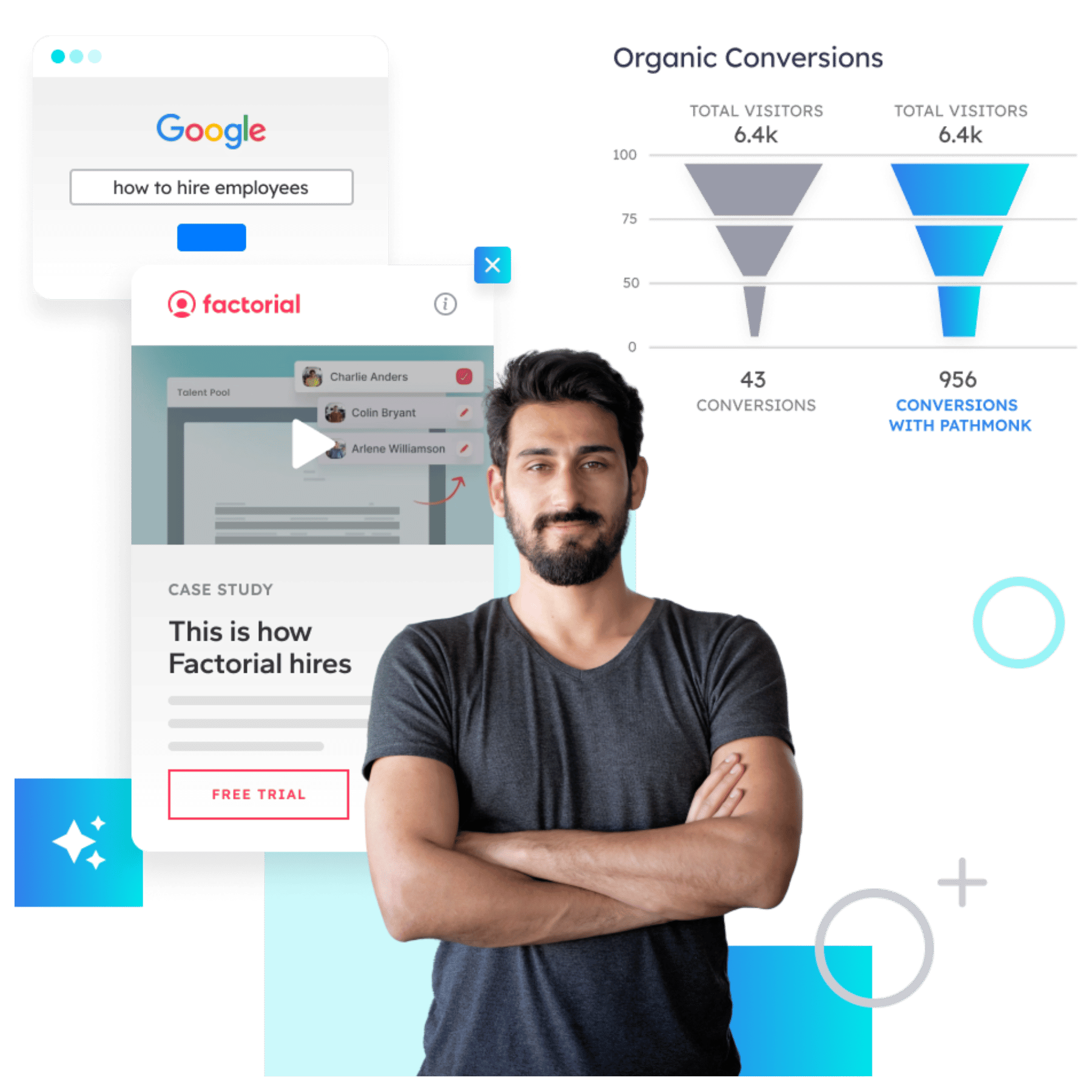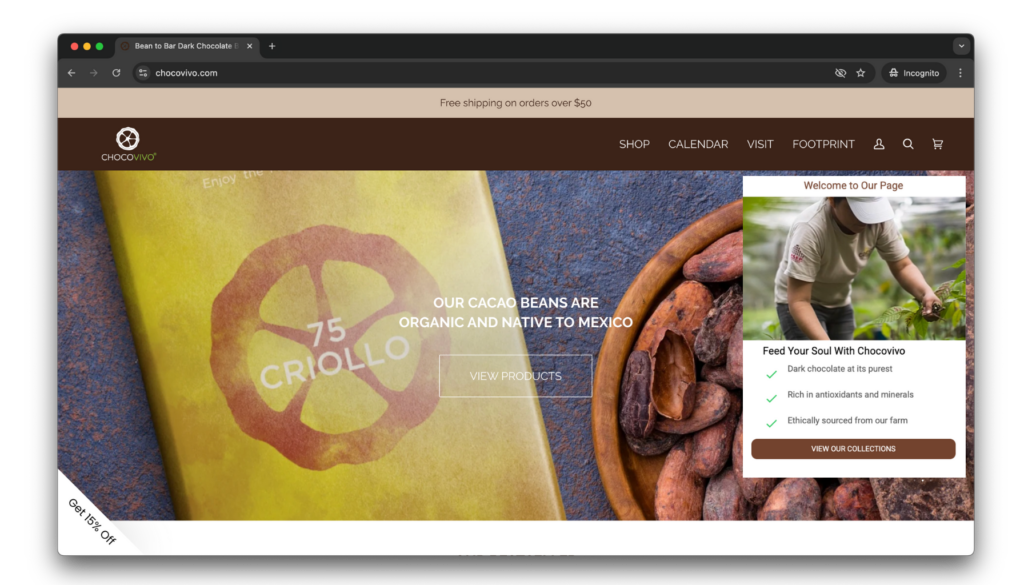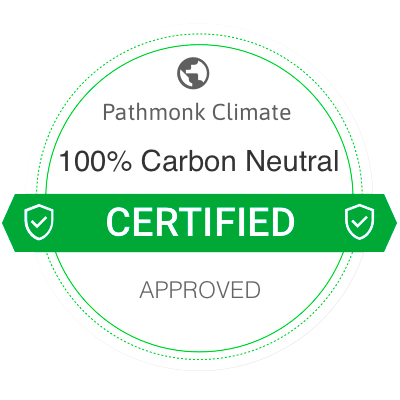The boom in AI-powered search is undeniable — but it’s happening in an unexpected place: your desktop. While mobile devices dominate internet usage, they’re currently being sidelined in the AI search revolution. For e-commerce brands, that’s both a red flag and a golden opportunity.
New data from BrightEdge reveals that over 90% of AI search referrals come from desktop, even though mobile accounts for the majority of web traffic globally. This disconnect isn’t just a technical footnote — it has major strategic implications for ecommerce, content visibility, and digital marketing success.
Let’s unpack why mobile AI referrals are lagging, what it means for e-commerce, and how you can get ahead.
Table of Contents
The AI search surge: what’s really happening?
Search is being redefined. Traditional engines like Google are evolving with AI-driven features like Overviews, while new entrants like ChatGPT, Perplexity, and Gemini are fundamentally altering how people find information. But for all the hype, AI search adoption is still in early stages — and it’s not evenly distributed across devices.
BrightEdge’s recent data shows a sharp imbalance in where traffic from AI search tools is coming from:
- ChatGPT.com: 94% desktop
- Perplexity.ai: 96% desktop
- Bing (with AI Copilot): 94% desktop
- Google Gemini: 91% desktop
- Google Search (AI Overviews): The only outlier, with 53% mobile vs. 44% desktop
This means mobile AI referrals are barely a blip, and that’s despite mobile dominating overall internet access. According to Statista, mobile accounts for more than 60% of global web traffic. So, what’s going on?
Why AI search isn’t working (yet) on mobile
AI-powered search is growing fast, but mobile still lags far behind when it comes to generating website traffic. Despite the fact that mobile dominates global internet usage, most of the referral traffic from AI search engines is still coming from desktop.
Here’s why mobile isn’t pulling its weight yet.
1. In-app AI usage doesn’t lead to clicks
Most mobile users interact with AI inside standalone apps like ChatGPT, Perplexity, or Gemini. These apps are designed to give answers right inside the experience, so users rarely need to go anywhere else.
When someone asks a question like “best sustainable skincare brands” or “top-rated hiking shoes,” the app typically gives a summary, a few product names, and maybe a bullet list of pros and cons. That’s enough to satisfy the user — without ever needing to visit a brand’s website.
Even when links are included, they’re not obvious. They might be hidden behind drop-downs, placed at the very end of the answer, or shown as small, secondary elements. On mobile, where screen space is limited, this added friction leads to fewer clicks.
2. AI search responses on mobile don’t encourage external browsing
AI tools are built to keep users in the experience. On mobile, this is especially true.
In ChatGPT, for example, you might see a block of text, a summary, or even interactive cards. But rarely do you get the same direct link exposure you would on desktop. There’s simply less space, and the format leans more toward giving complete answers than encouraging next steps.
That’s a big shift from traditional search. In the past, users would click on links to explore results. With mobile AI, it’s the opposite. The interface is the endpoint.
This changes the dynamic for marketers. You’re no longer competing for a higher ranking — you’re competing to be cited at all, and hoping the user is curious enough to dig deeper.
3. Mobile users want speed, not depth
The typical mobile session is short. People might be on the go, multitasking, or quickly checking something between other tasks. That changes how they search, and how they interact with results.
AI tools on mobile are well-optimized for this. They deliver fast, bite-sized summaries that answer questions without the need to scroll, click, or compare. That’s great for the user — but it sidelines websites entirely.
For example, if a user asks for “quick dinner recipes with chickpeas,” an AI assistant might instantly show a recipe, prep time, and ingredients. That’s it. The session ends there. No visit to the food blog. No exposure to the brand. No ad revenue. No email signup.
Mobile becomes a destination, not a gateway.
4. Mobile AI results don’t prioritize visibility the same way
There’s another issue: real estate.
On desktop, AI Overviews take up a large portion of the screen, often sitting above the fold and drawing attention. On mobile, they appear smaller, are sometimes collapsible, and often compete with other elements like ads, maps, or carousels.
Even when your brand is featured in an AI Overview on mobile, it may not get seen — or clicked — the same way it would on desktop.
And with mobile screens being more compact, there’s less room to present context or supporting information that might encourage a user to click through.
The result: AI on mobile is delivering answers, but it’s not driving traffic. That’s a major shift for ecommerce marketers who are used to thinking of mobile as the discovery engine of the funnel. Right now, mobile AI isn’t helping you get found — it’s helping users skip the step where they would have found you.
But this won’t stay static forever. AI experiences on mobile are still evolving. Google’s already testing more ecommerce-related Overviews on mobile than on desktop. Eventually, mobile will become a referral engine again — and the brands that prepare for that shift now will be in a much better position when it happens.
E-commerce’s missed opportunity: mobile intent meets AI silence
For e-commerce brands, this is a dangerous blind spot. Mobile traffic is crucial across the entire funnel — especially in discovery and decision-making. Yet mobile is almost completely absent from the new AI-driven search landscape.
Here’s what BrightEdge found when comparing AI Overviews across mobile and desktop:
| Platform | AI overviews frequency | Screen coverage | Format consistency |
| Mobile | Appear in 13.5% of ecommerce queries (3x desktop) | Smaller | Greater variation |
| Desktop | Appear in 4.5% of ecommerce queries | 80% more screen space | More consistent |
This tells us two things:
- AI Overviews are more likely to show on mobile for e-commerce searches.
- But those Overviews take up less space, are less consistent, and less clickable.
In other words, even when mobile users are served AI-enhanced search results, they’re less likely to convert into clicks or conversions.
The big divide: mobile for discovery, desktop for depth
If we take a step back, this fits into a larger behavioral pattern:
- Mobile is primarily a discovery device. People scroll, browse, compare, and impulse-shop.
- Desktop is used for deeper research. When users want to read specs, reviews, or finalize a high-ticket purchase, they switch to larger screens.
This device-based intent split explains the current referral divide. But it also highlights an opportunity for marketers: to craft strategies that align with why users are searching — not just what they’re searching for.
What marketers need to do next
The current AI search landscape favors desktop, but that won’t last forever. Mobile is where the next wave of opportunity lies. Brands that optimize for mobile AI behaviors now can carve out early-mover advantages before competitors catch up.
Here’s how to rethink your strategy:
1. Audit your mobile SEO and AI visibility
Even if AI Overviews aren’t sending traffic today, that could change quickly. Google’s tests are ongoing, and algorithm shifts happen fast.
Ask yourself:
- Are your mobile pages optimized for quick loading and semantic clarity?
- Are you using structured data and schema markup for products, reviews, and FAQs?
- Are your content snippets AI-friendly (clear answers, clean formatting, high authority)?
Getting featured in an AI Overview now — even without massive referral traffic — positions you well for the moment mobile clicks do start flowing.
Get more conversions from your organic traffic
Don't let Google's updates and generative AI affect your results.

2. Rethink content for AI visibility, not just keywords
Traditional SEO focused on keyword matching. AI search focuses on context. That means:
- Content must answer real user questions directly.
- Pages must be well-structured (think FAQ-style, bullet points, and summarized answers).
- Brands need to invest in topical authority through cluster content strategies.
Bonus tip: Focus on queries with commercial intent on mobile — like “best running shoes for flat feet” — which are more likely to surface ecommerce AI Overviews.
3. Test visibility in different AI engines
It’s not just about Google anymore. You need to monitor how your content appears in:
- ChatGPT (especially via Bing index integration)
- Perplexity
- Google Gemini (especially as it rolls out to mobile search)
- Bing AI
These engines pull from different sources and use varying ranking logic. Your content might perform differently on each, and desktop vs. mobile even more so.
4. Adapt to zero-click experiences
Let’s be blunt: not every AI result will lead to a click.
Sometimes, AI gives the full answer right there in the interface. That’s frustrating for traffic goals — but it’s also an opportunity for brand exposure and authority building.
Treat visibility as a layered funnel:
- Tier 1: You appear as the cited source in the AI result — even if the user doesn’t click.
- Tier 2: You’re linked and the user taps through.
- Tier 3: You appear multiple times across results, building brand familiarity.
5. Design device-aware user journeys
Jim Yu, CEO of BrightEdge, summed it up well:
“If marketers are not paying attention to how AI operates on different devices, they may be missing some key opportunities, especially in ecommerce.”
Translation? Stop thinking only in keywords. Start thinking in contextual device journeys:
- What does the user need on mobile vs. desktop?
- How can you guide discovery on mobile that converts later on desktop?
- Can you segment AI content or landing pages based on device-driven behaviors?
High-intent traffic is coming. Here’s how to convert it.
Traffic from AI-powered search is different. Users aren’t casually browsing, they’re often arriving on your site after asking specific, transactional questions. They know what they want, or are close to figuring it out. That makes these visits high-value.
But if your site can’t guide them through that final stretch of the journey, showing the right product, removing doubt, clarifying value, that traffic goes to waste.
That’s where Pathmonk comes in.
Pathmonk is not just another analytics or CRO tool. It’s an AI-powered personalization engine that understands what each visitor needs at each stage of the buying journey — and adapts your site experience accordingly.
It doesn’t rely on cookies or user segments. Instead, it reads behavior patterns in real time (clicks, scrolls, visit depth, and more) to determine what stage a visitor is in — awareness, consideration, or decision — and triggers micro-experiences that match that intent.
For ecommerce brands, this means:
- Helping first-time visitors understand your product
- Guiding mid-funnel users to explore more
- Encouraging ready-to-buy users to take action
All automatically. All in real time.
What happens after the click? How ChocoVivo increased sales by 61% with Pathmonk
AI search is bringing a new kind of visitor to ecommerce sites. These users already know what they’re looking for, they’ve asked a specific question, compared options, and chosen a link. But once they land on your site, what happens next is everything.
That’s the part most brands still overlook.
ChocoVivo, a US-based bean-to-bar chocolate company, ran into exactly that challenge. They had solid traffic coming in. The problem? Visitors landed and got lost. Some weren’t sure what the brand was about. Others couldn’t easily explore their full product range. And many didn’t convert, not because they weren’t interested, but because the site didn’t guide them toward a decision.
This is the real risk with high-intent traffic from AI search: getting the click, but losing the conversion.
To change that, ChocoVivo’s agency, Media Contour, implemented Pathmonk to personalize the experience from the moment a user arrived.

Instead of offering the same static layout to everyone, Pathmonk used behavioral signals — like scrolls, clicks, and time on page — to understand what each visitor needed and trigger the right interaction at the right moment:
- First-time visitors saw short, informative videos that explained ChocoVivo’s unique chocolate-making process
- Visitors exploring multiple pages were shown personalized prompts to discover both chocolate and skincare products
- High-intent users were guided to top-selling products without having to search
- Those showing hesitation were qualified and routed to the most relevant product pages, helping them move forward
The result? A 61% increase in purchases in just 30 days — without a site redesign, without manual configuration, and without waiting for test results.
This is exactly the kind of setup ecommerce brands will need as AI search matures. When users arrive ready to act, your website has to meet them with clarity, context, and direction. Otherwise, that high-intent traffic from AI turns into missed revenue.
ChocoVivo didn’t change how people found them. They changed what happened after.
That’s what made the difference.
Why this matters for your AI search strategy
If AI search brings you a visitor who already knows what they want — or is close — your website can’t afford to treat them like a stranger.
Pathmonk helps ensure that when those users land, they’re not left wondering:
- “What’s the difference between these products?”
- “Is this what I’m looking for?”
- “Why should I trust this brand?”
Instead, they’re shown content that answers those questions automatically based on real behavior.
This doesn’t require redesigning your ecommerce site or setting up dozens of tests. It just requires being ready for the kind of traffic that AI is already sending, low in volume for now, but high in intent.
And high intent is what converts.
TL;DR: Key takeaways
- AI search is booming — but it’s mostly desktop for now. Over 90% of AI-driven referrals are coming from desktop users, despite mobile dominating overall web traffic.
- Mobile users interact with AI differently. Most use AI via apps like ChatGPT or Perplexity, where links are hidden or suppressed, resulting in fewer outbound referrals.
- Google Search is the exception. Thanks to its integration with AI Overviews, Google is currently the only major engine sending more AI traffic from mobile than desktop.
- Ecommerce Overviews are more frequent on mobile — but less effective. They appear 3x more often on mobile for ecommerce queries but drive fewer clicks and less screen space.
- Marketers need to optimize for intent, not just traffic. AI search users often arrive mid- or bottom-funnel. Your site should adapt to that behavior — guiding visitors, not just informing them.
Pathmonk helps ecommerce brands convert this new traffic. With real-time, AI-powered personalization, you can respond to each visitor’s behavior and buying stage — increasing relevance and conversions. - The shift to mobile AI search is coming. Brands that prepare now — by personalizing experiences and optimizing for intent — will be the first to benefit.
What to do next
- Run an AI visibility audit on both desktop and mobile. Check which of your pages are showing up in AI Overviews and how they perform across different devices.
- Create content that fits how AI tools work. Focus on structure, clarity, and trust. Prioritize helpful answers and product relevance over keyword stuffing.
- Adapt your strategy to how people use each device. Mobile is often for discovery. Desktop is where people dive deeper. Your site should reflect that.
- Keep an eye on traffic from Gemini, ChatGPT, and Perplexity. These tools are evolving quickly. The way they send traffic will keep changing.
- Get ahead of the mobile shift now. It’s not a question of if, but when. Ecommerce visibility will look very different a year from now.
- Try Pathmonk free for a month. If you’re starting to see AI search traffic, use Pathmonk to automatically adjust your website experience based on each visitor’s behavior. No dev work. No cookies. Just more relevant interactions that help convert.
Increase +180%
leads
demos
sales
bookings
from your website with AI
Get more conversions from your existing website traffic delivering personalized experiences.

AI search is changing how people find information. But more importantly, it’s changing what they expect when they land on your site.
If you’re serious about making the most of high-intent traffic, this is the time to act.
The opportunity is already in front of you. You just have to be ready to convert it.





